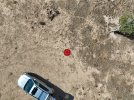- Joined
- Oct 12, 2016
- Messages
- 30,373
- Reactions
- 34,325
- Location
- Harrisburg, PA (US)
- Site
- mavichelp.com
I'm not sure LiDAR is ONLY useful for seeing through objects. Did you read that somewhere on DJI's website?LiDar, as I understand it, is able to see THROUGH obstacles. I don't know how that would help someone land or even navigate while flying. I'd like to hear how it would help.
DJI doesn't explain this in their manual, but here are some benefits of LiDAR sensors in general:
- Real-time 3D Mapping: LiDAR sensors emit laser beams and measure the time it takes for the light to return after hitting an object. This allows the drone to create a real-time 3D map of its surroundings, making it easier to detect obstacles like trees, buildings, or people.
- High Precision: LiDAR offers very precise measurements, often to within a few centimeters. This helps the drone navigate complex environments with better accuracy than other sensors like cameras or sonar.
- Works in Various Lighting Conditions: Unlike cameras, which can be affected by poor lighting or glare, LiDAR works equally well in bright light, low light, and even complete darkness. This ensures the drone can detect obstacles in a wide range of environments.
- Improved Collision Avoidance: By detecting obstacles well in advance, the forward-facing LiDAR sensor enables the drone to calculate alternative flight paths or stop to avoid a collision.
- Enhanced Autonomy: With a forward-facing LiDAR sensor, the drone can more reliably perform autonomous missions, especially in unfamiliar or dynamic environments, without requiring constant human intervention.










